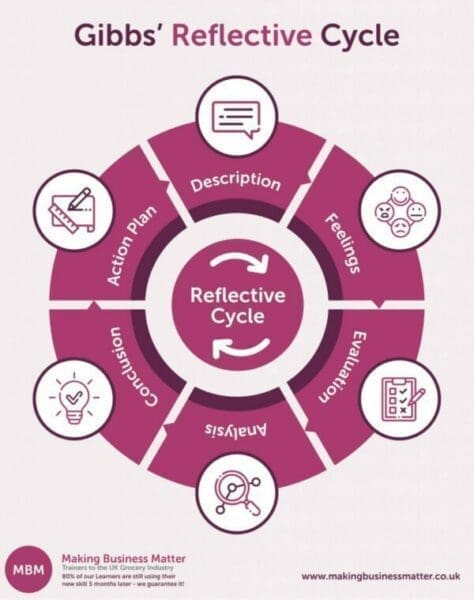Are YOU Leadership Material?
The top 10 leadership traits that people nominate when asked inevitably reflect the times they’re living in. Our attitudes today are very different to previous decades. Yet the essential attributes of leadership remain constant. We see this particularly in times of stress. When businesses were pivoting in the pandemic, we heard plenty about resilience and agility. Those words now feel very 2020. But as it turns out, they’re timeless characteristics, shown by leaders throughout history.
This article goes through today’s Top 10 leadership traits then ponders some earlier thinking, before considering more ideas. By way of “earlier thinking,” in 1948 Ralph Stogdill pinned leadership down to two factors. These are, initiating structure and cultivating respect and trust.
Using these as our lens, we look at some other leadership traits people have come up with since. We end with James C. Maxwell’s 21 indispensable qualities of a leader and suggest a download with (optional!) homework. Stay focused with Stogdill’s factors as you read, and hopefully, you’ll find inspiration.
10 Leadership Top Traits to Take on Board
Champlain College in Vermont recently revealed that people in our era identify the following attributes as the top leadership traits. By the way, you needn’t have these traits to run a successful business. We can all think of people that don’t! But everyone – including them – can get better if they apply themselves.
Leader, Manager or Team Member, Here are Some Qualities to Think About and Develop:
1-5
- 1. Vision: Seeing the big picture: where the business is going, the possibilities, and what’s needed to get there.
- 2. Inspiration: Sharing that vision with others and getting them excited. Being ‘present’ in the business, to motivate and engage people.
- 3. Strategic and critical thinking: Thinking critically about your business. Carrying out regular ‘SWOT’ analyses, so you can alter course as appropriate. Being humble enough to assess your personal contribution and see how you’re performing, and improve it, if necessary.
- 4. Interpersonal communication: Interacting with others in a way that feels genuine. You don’t have to be an extrovert necessarily but demonstrate empathy and active listening, and build relationships.
- 5. Authenticity and self-awareness: Understanding your strengths and flaws and shaping a leadership style that’s true to you. Not trying to fit someone else’s model, but being the best version of you.
6-10
- Open mindedness and creativity: Appreciating that success comes with a willingness to change things. Preparedness to bring in fresh eyes and encourage new ideas.
- Flexibility: Leadership also means being adaptable and nimble – agile, even – when situations demand. When things go wrong, it’s how you react that counts. Be prepared to stop, reassess, reset. And inspire your people to think the same.
- Responsibility and dependability: Your team need to know they can depend on you to take on your fair share of the load. And follow through and support them through tough times.
- Patience and tenacity: A good leader knows how to take the long view, and encourage others to as well. Managing bumps and bashing on is the key, from small projects to implementing a corporate vision.
- Continuous improvement: You can always do things better, be it personally in your work, leading the team, or running the business. And you can help your team find ways to do things better. Perhaps use Gibbs’ reflective model to identify areas for improvement.
Click the below image for a higher resolution.

Now scroll back and re-read this list of the 10 top leadership traits. The takeout message is that you can be proactive, whatever happens and control the things within your control. And you can also manage how you respond to the other stuff. That’s a pretty empowering thought.
Even if you don’t feel terribly gifted, don’t give up. The beauty of a list like this is, in Stogdill’s phrase it’s an initiating structure to develop these skills. Sometimes you’ll feel you’re running on empty. But keep working on these 10 traits and the positive uplift should see you through.
Why are These Traits so Important?
Business is about people. We like to know who we’re working for. It’s all down to connection and confidence. The underlying psychology is clear. We’re programmed for survival. Cognitive empathy prompts attachment, as the therapists say. We’re drawn to people who make us feel secure. As Daniel Goleman’s work with leadership styles and emotional intelligence highlights, leaders who provide structure, respect and trust will do just that.
Let’s Meet Ralph
In a moment we’ll look at some other ideas about leadership traits. These will flesh out your understanding of the 10 top leadership traits. But first let’s hear more about Ralph Stogdill, the American leadership expert mentioned earlier.
In the late 1940s, business was on the up after the war. And there was a flood of ideas in circulation about the kind of people who should lead it. People thought you could identify these individuals by using metrics. And they still do. IQ tests and Myers Briggs Type Indicator assessments are widely accepted means of assessing candidates’ leadership potential.
That’s all fine. But Ralph Stogdill was something of a sceptic. He looked at the research and came up with a different view. His line was that people didn’t become effective leaders, just because they had certain characteristics that could be measured. Instead, the good news for us was, there were fundamental attributes everyone could develop.
Ralph Stogdill wrote about this in 1948, in his article “Personal Factors Associated with Leadership: A Survey of The Literature.” As a base, he analysed data and findings from over 100 leadership-related studies, across 27 different factors.
We don’t have to work through the studies or the factors. Ralph did it. He decided that if all these findings were combined, the list would be too long to be any use. Instead, he argued, a successful leader’s characteristics must be relevant to the demands of the leadership situation. That is, the specific challenges they faced and the abilities, values, hopes and concerns of the followers.
Stogdill’s 2 Leadership Factors
As we mentioned at the start, Ralph Stogdill decided there were two factors in leadership, which everybody could grasp:
- Initiating structure: task behaviours, such as organising, scheduling and seeing that work is completed.
- Consideration: relationship behaviours such as respect and trust.
Leadership thinking doesn’t stand still. Based on Stogdill’s work, in 1974 House and Mitchell came up with 4 leader behaviour types:
House & Mitchell’s 4 Path-Goal Leadership Behaviours
- Directive: Leaders tell their followers what’s expected of them. This includes what to do, how to do it, and when it will be delivered. It works best when people aren’t sure about the task, or there’s other uncertainty in the business.

This first behaviour, Directive, is based on initiating structure. The other behaviours centre on consideration for others:
- Supportive: The leader makes work pleasant for workers by showing concern and being friendly and approachable. This works best in situations where tasks are physically or psychologically challenging, like sales.
- Participative: Here, the leader consults his followers before deciding how to proceed. This works best when the subordinates are highly trained and involved in their work.
- Achievement: The leader sets challenging goals for their followers. They expect the highest level of performance but show confidence that they will meet expectations. It works best in technical or scientific work.
Keep Ralph Stogdill and House and Mitchell in mind, and hopefully, the rest of this should become clearer.
Spell Out Your Path Through the Alphabet Soup

Now let’s look at some other ideas people have come up with about leadership traits and characteristics. With so much written about leadership in the public domain, it’s something of an alphabet soup. But don’t be deterred! The best advice is, pick out what resonates with you, there’s plenty here. And then let it sit in your mind and process it.
5 Characteristics of Effective Leaders
- Be self-aware and prioritise your and others’ personal development.
- Focus on developing others.
- Encourage strategic thinking, innovation and action.
- Be ethical and community-minded.
- Practise effective cross-cultural communication.
6 Characteristics of an Effective Leader
- Integrity/dependability/drive: This includes endurance and enthusiasm.
- Self-confidence.
- Desire to influence others.
- Ethical and moral character.
- Intelligence.
- Relevant knowledge.
7 Leadership Traits
- Compassion.
- Confidence in yourself and your team.
- Communication skills.
- Ability to make tough decisions.
- Desire to serve a greater purpose.
- Ability to foster a creative environment.
- Leading by example
The idea of serving a greater purpose may sound unusual in business, but people are drawn to the notion of servant leadership.
Bill Sims’ 12 Leadership Traits
Here’s a Dirty Dozen leadership traits a trainer called Bill Sims has put forward:
- Good communication skills.
- Trustworthiness.
- Willingness to listen.
- Knowledge and experience.
- Good attitude.
- Accountability.
- Ability to motivate.
- Integrity.
- Inspiring respect.
- Courage.
- Staying organised.
- Positive reinforcement.
Bill Sims calls this last one ‘leadership that sticks.’ That’s because it’s about the ability to change your followers’ behaviour and drive and maintain high performance. So your team carry on the good work when you’re not around, which is what it’s really all about.
15 Qualities of a Good Leader
- Honesty and integrity.
- Confidence.
- Inspiring others.
- Commitment and passion.
- Good communicator.
- Decision making capabilities
- Accountability.
- Delegation and empowerment.
- Creativity and innovation.
- Empathy.
- Resilience.
- Emotional intelligence.
- Humility.
- Transparency.
- Vision and purpose.
Look at this list and think about which of these concern initiating structure and which are showing consideration for others.
20 Qualities of a Good Leader
We talked about Ralph Stogdill not holding with metrics. But methods like Myers-Briggs Type Indicator assessments continue to flourish as means of assessing candidates’ leadership and other potentials. Here’s another one.
The Integrity and Values Profiling System is the result of extensive research into leadership and integrity in Australia. It involves understanding and profiling an individual, based on 20 traits to help predict future behaviour and performance.
The Profiling System 1-10

- 1. Truthfulness: the capacity to be open, honest and forthright.
- 2. Responsibility: taking total ownership even when the outcome is undesirable.
- 3. Accountability: your capacity as a leader to hold others unaccountable for the results they promised.
- 4. Loyalty: making decisions for the greater good and putting aside personal goals to serve the organisation.
- 5. Self-awareness: self-reflection and introspection, allowing you to see your impact on others.
- 6. Impression management: understanding the importance of being seen to do the right thing.
- 7. Vision: seeing possibilities and turning ideas into action.
- 8. Assertiveness: expressing your opinions confidently, regardless of your relationship to the other person. Standing up for yourself in difficult situations, and knowing the power of no.
- 9. Personal happiness: A successful life starts with contentment, say the people behind the Profile. When you’re happy with your current life, you can look at the future unhindered by fear.
- 10. Self-belief: Leaders need self-belief that gives them confidence in their abilities and expectations of success
The Profiling System 11-20
- 11. Ability to Talk: Good leaders enjoy talking to people and have no problem expressing their opinion.
- 12. Listening Skills: Employees rate bosses who choose to give patient and thoughtful attention to what’s presented to them. Team members are attracted to leaders who listen.
- 13. Appreciation: A powerful motivator, leaders inspire by acknowledging members’ contributions and offering critical yet positive feedback.
- 14. Empathy: If you choose to see through others’ eyes, you provide support and build trust.
- 15. Networking: In today’s competitive environment you can’t sit and wait for others to come to you.
- 16. Result orientation: Leaders must be winners at heart. They should have clear goals and be always geared to achieving them.
- 17. Organisation: A leader must stay organised, with a schedule and structured approach to plans.
- 18. Task focus: Task focused leaders get things done. Leaders can immerse themselves in work and stay focused.
- 19. Attention to detail: Sweat the small stuff. Be conscious of details and through, precise and accurate in your work.
- 20. Reliability: Keep the promises you made. Be more than the person on top, be punctual and do what it takes to make deadlines and deliver.
AND FINALLY: Your Homework! The 21 Indispensable Qualities of a Leader

American leadership expert James C. Maxwell has written a book called The 21 indispensable qualities of a leader. The subtitle is ‘Becoming the person others will want to follow.’ Here are a few of Maxwell’s qualities, with examples of famous people embodying them:
- Character – Bill Lear, Lear jet inventor: fixed the jet’s problems, but risked his life doing it.
- Commitment – Michelangelo: painted the Sistine chapel, damaged his eyesight but went on working.
- Courage – Eddie Rickenbacker: Set the land speed record, was then a WW1 air ace, and survived a plane crash and 22 days on a raft in the Pacific in WW2.
- Listening – Oprah Winfrey, TV mogul who based her career on listening.
- Passion – John Schnatter – Creator of Papa John’s Pizzas – still visits franchises and tosses pizzas.
- Problem Solving – Sam Walton – Walmart creator – made a small business huge by solving difficult situations.
- Security – Margaret Thatcher – British PM – secure in who she was, despite constant criticism for doing a man’s job.
- Teachability – Charlie Chaplin, comedian, actor, filmmaker, constantly perfecting his craft.
- Vision – Walt Disney – flickering cartoon maker to the founder of Disneyland.
Go on! Download the pdf to get James Maxwell’s full list and the optional homework. Everyone can benefit from learning more about the top 10 leadership traits. Including you!
Action: For even more useful content on leadership, check out our ultimate guide on Leadership Skills.




